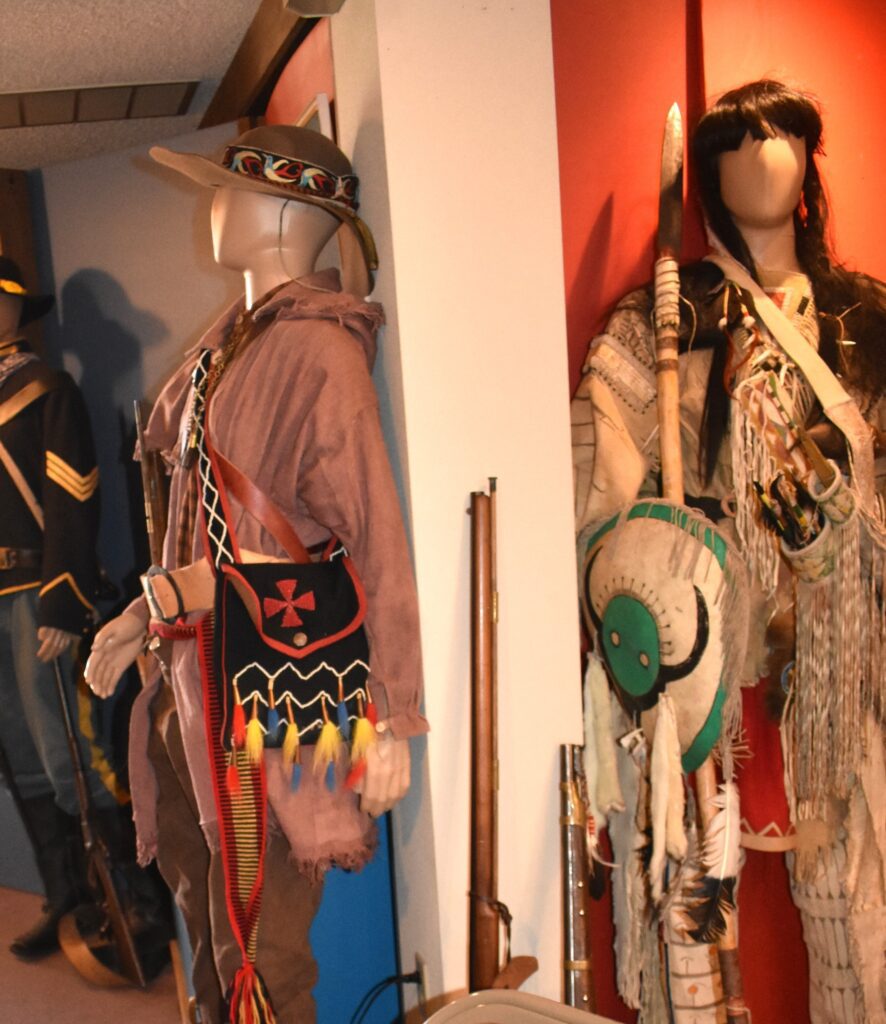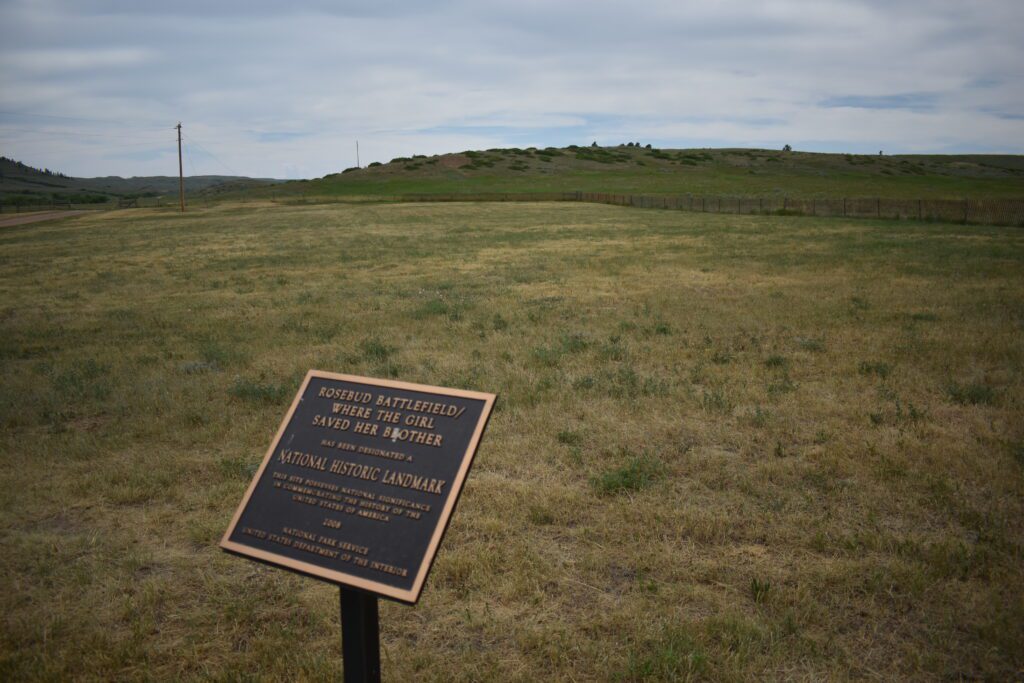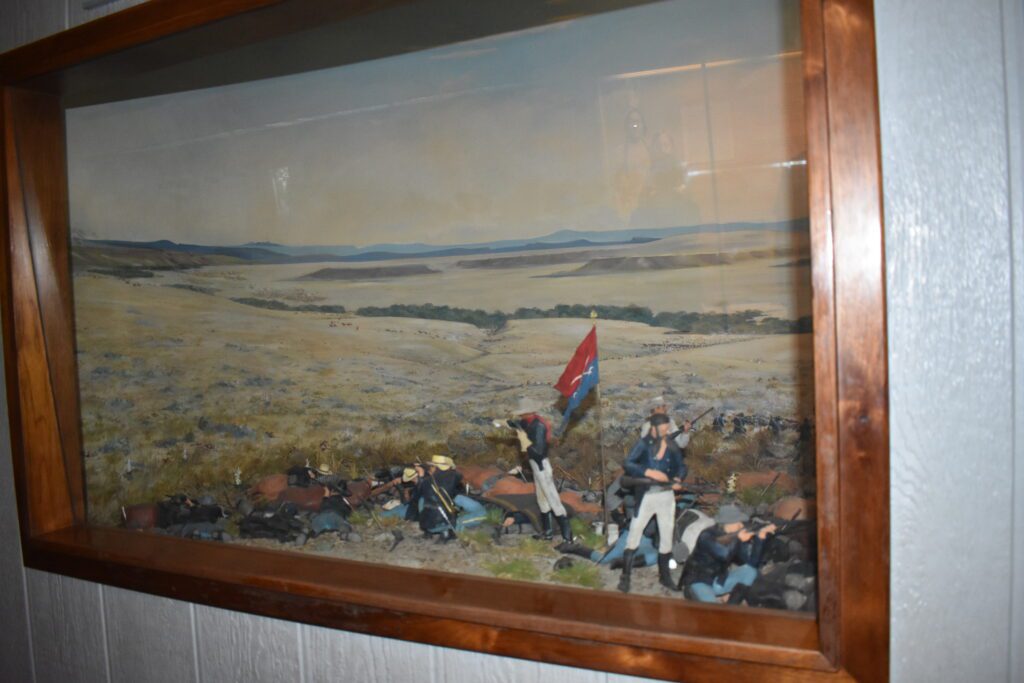News
History: Frank Grouard, Chief of Scouts

One of the most interesting men on the frontier during the 1876 Indian campaigns was Frank Grouard., who served as a scout and an interpreter for General Crook. Once captured by the Sioux, he learned much of their culture before returning to his own society. He was a scout at the Battle of the Rosebud, as well as many other battles on the Wyoming frontier. This is some of his story.
The Buffalo Bulletin, November 15, 1894 – Life of Frank Grouard. Chief of Scouts – In all the history of the Northwest and Indian warfare of modern times, there is no more picturesque character than Frank Grouard. His great service in the many Indian campaigns are within the recollection of the present generation and the high esteem in which he is held by the foremost Indian fighters of the day are known to all; but to the people of Wyoming and especially those of Johnson county, among whom he has made his home, and a great number of fast friends, during the last decade and more, the portrayal of his adventurous life will be doubly interesting.
Frank Grouard is, as becomes one who was trained in all the studied reserve of Indian habits, and who has enjoyed and still retains the intimate confidence of his superior officers, a man of few words. It needed more than ordinary persuasion to unlock the storehouse of his past, and to draw from it the story of a life crowded with adventure, and the results of keen observation and a more than usually retentive mind.
It is a source of congratulation not only to Frank Grouard but also to the public, that it fell to the lot of so enterprising and brilliant a journalist as Mr. Joe De Barthe to be come the biographer of so distinguished a character as Frank Grouard. We have been favored with advance sheets of the Life of Frank Grouard, and we do not hesitate to predict that the book will become one of the most popular and valuable historical workers of the age.
Not only this, but if the style in which these extract-ate written, is a fair criterion of the whole work, it will be as entertaining to the rising generation as it will be to the student of Western history and Indian folk lore. The interest it excites will be of no evanescent character, for the conditions of life on the western frontier are rapidly changing, and iv a few more years the increase of population and the extinction or civilization of the red man will have rendered a life of adventure such as that hero portrayed impossible, at least upon this continent. Even today it difficult for those who are personally acquainted with the subject of the biography to realize that so large a portion of almost heroic adventure has been concentrated in the history of one still in the prime of life. But those who know Grouard best are best aware that not even the facile tongue of his amanuensis would avail to draw to draw from his lips anything but the plain unvarnished story of his life.
(This book is still available)

Bill Barlow’s Budget, April 26, 1893
After the Indian Wars, he continued to scout, this time for the railroad.
The Buffalo Bulletin, July 6, 1893 – Burlington Extension. A correspondent of the Cheyenne Leader, in writing from Buffalo on Monday, says: “Chief Route Hunter Ensign of the Burlington, with his pack train, has been camped at Fort McKinney for several days. The outfit left this morning for the mountains going via Clear creek and Mosier canon, and were accompanied by Frank Grouard. “Everyone here attaches much significance to the departure of the outfit. And it is confidently believed that the mainline of the Burlington and Missouri will be built through Buffalo and via Clear creek by the base of Cloud peak and across the Big Horn basin to Boise City, Idaho.
‘Straws show which way the wind blows,’ and one of the straws in this case is a fact which occurred at Clearmont. The lady who runs the section house there was complaining, when the superintendent said to her that in a little while she would have the men from three sections Instead of two, us now. This could not be possible without another line being started towards Buffalo up Clear creek.
“It is evident that the line over the Big Horns from Sheridan via Bald Mountain, has been abandoned, and Instead will be built across the Crow reservation, and all signs now point to the building of a line of road through the mountain at this point. Such a line will open up the Big Horn Basin, which is an empire within itself, and the scenery along the route will be among the grandest in America. Buffalo people are confident of their towns future prosperity.”

A scout and an Indian at Fort Phil Kearny Interpretive Center
The next two clippings are talking about his death, but they tell a great deal about his life as well.
The Sheridan Post, September 15, 1905 – Famous Scout Passes Away. – Frank Grouard Died in a Hospital at St. Joe, Recently of Pneumonia. Frank Grouaid, the great scout who for many years served with distinction in the United States Army, died in a hospital at St. Joseph, Mo., the fifteenth of last month. Grouard had been in poor health for three or four years, and being pinched with poverty and reduced to the lot of a common laborer, his earnings being a bare pittance, he was unable to take proper care of himself, consequently when he chanced to catch a severe cold it ran on and on and in ten days resulted in his death from pneumonia. Thus died the man who in Wyoming and other western states performed a service which could not he paid for in money and lands.
He died in the pauper ward of a hospital, being attended by a charity doctor, but thanks to a few patriotic citizens of St. Joe he was provided with decent burial. The death under such sad circumstances of this old scout whose loyally, faithfully and ably served General Crook and other commanders in Wyoming, brings to mind the fact that there should he some way provided for taking, care of that class of men who are not enlisted and yet give to the country the. best days of their lives.
Historian Coutant in speaking of Frank Grouard’s death said yesterday: “Frank Grouard was deserving of better treatment than he received at the hands of the government after it no longer stood in need of his services. General Crook never lost an opportunity to testify to his great ability at a scout and his loyalty to the army. The great Indian fighter relied on Grouard at the battle of the Rosebud and in all the fights in northern Wyoming in 1876. These were more notably the Slim buttes fight; the battle of Red Forks, the battle with Crazy Horse and not least his service in the famous “Sibley Scout.”
There are hundreds of people in Northern Wyoming who knew Frank Grouard well and who will sincerely mourn his death. “The great scout was born in the Island of Ana of the Friendly Islands in the Southern Pacific, on September 20th, 1860, and was nearly 55 years old at the time of his death. His father was an American missionary sent to the island and his mother a native of the place where he was born. He was brought to the United States when he was two years old and grew to manhood in Utah.

When he was 18 or 19 years old, he was captured by Sitting Bull’s band of Indians and was an inmate of the chieftain’s household for a number of years. It was thus he became acquainted with Indian ways, the Indian language and the Indian country,
He was a crack shot with the rifle, a superb horseman and rider. All the army officers commend his bravery and ability, Among the citizens of Sheridan county who perhaps knew him best are T. J, Foster; C.W. Morgareidge, O. P. Hanna, S.H. Hardin, K. Burkitt and W. K Jackson. The scout leaves a wile and child. a boy nine wars old, who have just come to Sheridan to live.”
The Enterprise, Sheridan, Wyoming September 16, 1905 – Death of Frank Grouard It was not until this week that The Enterprise learned that Frank Grouard, the noted scout, was dead, having passed away at St. Joseph, Mo. August 15, from an attack of pneumonia. All the old timers in this section remember the scout, who was chief of scout on the staff of General Cook. No one knew this country better than Grouard. His was strange history. He was born in one of the largest Islands of the Friendly group in the South Pacific. His father was missionary and after several years labor on the islands married native. He came to San Francisco when Frank was but two years old. Mrs. Grouard’s health failing the parents returned to the island leaving Frank with a family in San Francisco. They later removed to Utah. When Grouard was about 17 years old lie was stolen by the Sioux Indians and was with them for about nine years, he knew this country like book and was of great service to the government in subduing the Sioux.
His wife and nine-year-old son are now in Sheridan, where Mrs. Grouard is earning living for herself and son. If anyone deserves pension, it is the widow of the scout and some of the influential people who are in touch with the department would do a good deed if they could secure pension for the widow and child.

Diorama at Custer Battlefield Museum
Mr. Grouard was born September 7, 1850. The history of his life was published by Joe DeBarthe, formerly located in Sheridan, and was an interesting story. Grouard was the first one to reach the battle ground of the famous Custer Massacre, going there while the bodies were still warm on the field and before the news of the disaster reached, the ears of the troops.
The history of Wyoming is full of characters such a Grouard, and they helped to make Wyoming what it is today.


Nancy Mickelson
October 12, 2024 at 2:19 pm
I love all of Frank Grouard’s history-especially when it involves interaction with my great-grandfather, August Trabing. Grouard came into Trabing’s store a some point and Trabing offered to buy Grouard’s trusty horse for $500.00 in Gold. Grouard turned down the offer saying that his horse had saved his life many times and was better that an insurance policy to him. The horse was bought for $63 dollars from the army. There are other interesting stories that are very worth reading about this amazing man.